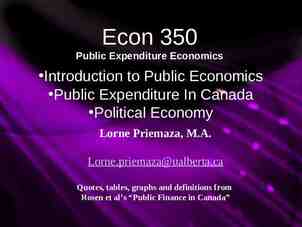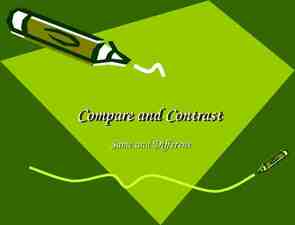Human Resources Management: Competencies for HR
20 Slides6.10 MB

Human Resources Management: Competencies for HR Professionals Chapter 7: Compensation and Benefits Unless otherwise noted, this work is licensed under a Creative Commons Attribution-NonCommercial-ShareAlike 4.0 International (CC BY-NC-SA 4.0) license. Feel free to use, modify, reuse or redistribute any portion of this presentation.

Learning Outcomes 1. 2. 3. 4. 5. 6. Describe compensation philosophy and goals of a compensation plan. Describe types of job evaluation systems and their uses. Define and discuss the types of pay systems and factors determining the type of pay system used. Interpret the laws relating to compensation. Describe goals and types of benefits for employees. Demonstrate competencies in managing compensation and benefits (rewards) that supports the organizational strategy as an HR Professional.

7.1 Developing a Compensation Package Compensation pays workers for work completed and provides incentives to motivate employees that results in loyalty and happiness on the job. Before developing compensation philosophies, there are some basic questions to address: From the employee’s perspective, what is a fair wage? Are wages too high to achieve financial health in your organization? Do managers and employees know and buy into your compensation philosophy? Does the pay scale reflect the importance of various job titles within the organization? Is your compensation competitive enough to attract and retain employees? Are you abiding by the laws with your compensation package? Is your compensation philosophy keeping in line with labour market changes, industry changes, and organizational changes?

7.1 Total Rewards Structure Implementation Competencies Collect comparative data on total rewards in place at competing organizations. Assign positions in the organization into the total rewards structure using an appropriate job evaluation system. Implement programs and initiatives relating to the organization’s rewards structure equitably within the organization. Ensure the rewards structure maintains its compliance with legal requirements.

7.1 Compensation Policy Some organizations choose a market compensation policy, market plus, or market minus philosophy. A market compensation policy is to pay the going rate for a particular job, within a particular market based on research and salary studies. The organization that uses a market plus philosophy will determine the going rate and add a percentage to that rate, such as 5 percent A market minus philosophy pays a particular percentage less than the market.

7.2 Goals of a Compensation Package Total Compensation Package or sometimes known as Total Rewards. Internal equity is a perceived equity among different jobs within a company. In other words, jobs that are similar should have similar value, and receive similar pay. External equity relies on paying employees that is perceived to be fair based on what they market is paying. The company compares their own pay to what other similar companies are paying their employees

7.2 Total Rewards Structure Competencies Collect comparative data on total rewards in place at competing organizations. Assign positions in the organization into the total rewards structure using an appropriate job evaluation system. Implement programs and initiatives relating to the organization’s rewards structure equitably within the organization. Ensure the rewards structure maintains its compliance with legal requirements.

7.3 Job Evaluation and Pay Systems Job evaluation is defined as the process of determining the relative worth of jobs to determine pay structure. There are several ways to perform a job evaluation: 1. Job ranking system 2. Job classification system 3. Point factor system Once the job evaluation has been performed, Human Resources can move on to pay grading. This is the process of setting the pay scale for specific jobs or types of jobs.

7.3 Total Rewards Structure Evaluation Competencies Measure the effectiveness of the total rewards structure using appropriate metrics. Maintain knowledge of rewards structures in the organization’s sector, industry, and location. Ensure the rewards structure maintains its compliance with legal requirements. Assess the need for changes to the total rewards structure using data internal and external to the organization. Recommend changes to the total rewards structure to leadership based on collected data and information.

7.4 Compensation Strategies Compensation strategy considerations may include: Skill-based pay Competency-based pay Broad-banding Variable pay system. This Photo by R M Media Ltd is licensed under CC BY-SA

7.4 Pay Theories The Equity Theory is concerned with the relational satisfaction employees get from pay and inputs they provide to the organization. The Expectancy Theory says that employees will put in as much work as what they expect to receive in return for it. Reinforcement Theory, developed by Edward L. Thorndike (Indiana University, 2011), says that if high performance is followed by some reward, that desired behaviour will likely occur in the future.

7.4 Total Rewards Structure Development Competencies Maintain knowledge of rewards structures in the organization’s sector, industry, and location Create equitable and effective rewards structures which include compensation, pensions, benefits, and perquisites. Make strategic use of rewards structure to encourage desired employee behaviour. Ensure the rewards structure maintains its compliance with legal requirements.

7.5 Laws Relating to Pay Compensation must adhere to pay equity. Pay equity refers to equal pay for equal work when similar jobs are performed, and where men and women are completing the same work. Equal pay for work of equal value. Employment Standards Act Unionized Workers and Labour Laws Image by Kayan Cheung-Miaw CC-BY-NC-SA

7.5 Leadership Competencies Collect comparative data on total rewards in place at competing organizations. Assign positions in the organization into the total rewards structure using an appropriate job evaluation system. Implement programs and initiatives relating to the organization’s rewards structure equitably within the organization. Ensure the rewards structure maintains its compliance with legal requirements.

7.6 Goals of Employee Benefits Employee benefits have goals that meet the organization, society, and employee goals. Society Organization Employees This Photo by REBEL EMis licensed under CC BY-NC-ND

7.7 Mandatory and Voluntary Benefits Mandatory benefits are provided by the employer due to the laws and the provincial regulations. Voluntary benefits are at the discretion of the employer. They include: Life insurance Health insurance Employment income Disability insurance Retirement benefits RRSP and Tax Free Savings accounts Paid time off and vacation Sick leave Employee assistance plans, relocation and caregiving.

7.8 Flexible Benefits Flexible benefits allows the employees to choose their own benefits from a “menu of choices” according to their individual needs and family needs. Some employees are offered credits to use to buy their benefit package. Other employees have benefit accounts This Photo by HealthyMouthMedia is licensed under CC BY-ND

7.8 Value of Total Rewards Competencies Create communications on the total rewards structure that help employees fully understand its value to them. Create persuasive arguments regarding the value of the total rewards structure that encourage desired behaviours. Select communication media based on the likelihood of the message being received and understood. Deliver communications regarding the value of and changes to the total rewards structure to employees.

Summary Describe compensation philosophy and goals of a compensation plan. Describe types of job evaluation systems and their uses. Define and discuss the types of pay systems and factors determining the type of pay system used. Interpret the laws relating to compensation. Describe goals and types of benefits for employees. Demonstrate competencies in managing compensation and benefits (rewards) that supports the organizational strategy as an HR Professional.

End Chapter Review Why is it important to complete a job analysis? What is the difference between compensation and rewards? What are the compensation strategies? Discuss the different pay theories. What does “equal pay for equal work” mean? What are the different types of benefits that a company offers?






